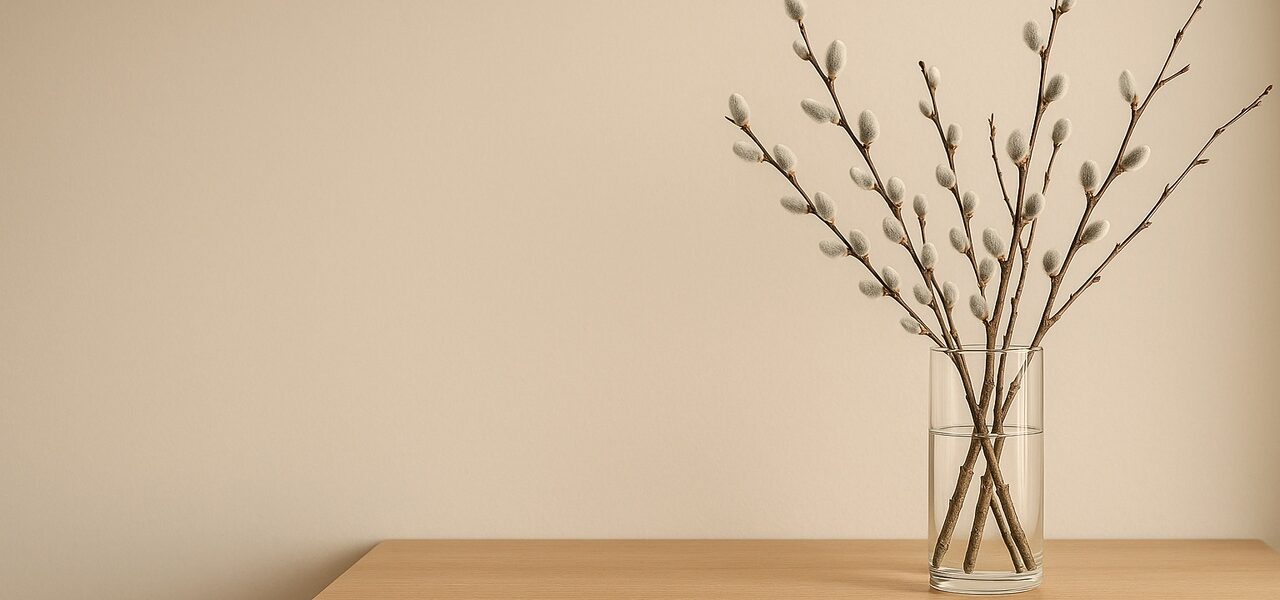Pyntekvister Decor: Meaning, Sizing & 9 Modern Ideas
Pyntekvister—literally “decorative twigs/branches”—is the Nordic shortcut to sculptural home décor. This guide gives you a clear definition, a quick sizing method that works in any room, a seasonal calendar for sourcing, a buyer‑vs‑DIY decision tree, nine modern ideas with actionable steps, and care tips so arrangements last.
What “pyntekvister” means (and why it works)
Pyntekvister combines pynt (decoration) + kvist (twig/branch). In practice, it’s the art of arranging slender birch, willow, or similar branches so their natural lines do the design work—minimal cost, maximum presence. Because branches add height, texture, and negative space without visual clutter, they complement modern, Scandinavian, and Japandi interiors.
Buying vs. cutting: quick decision tree
- Need it today? Buy 7–15 stems at a florist or market.
- Have access to trees/shrubs? Cut prunings in late winter or after flowering. Use clean, angled cuts.
- Want catkins/bloom? Choose pussy willow (catkins) or a spring‑flowering shrub (forsythia/quince/cherry) and force indoors.
- Display for months? Use willow or birch dry in a stable vase—no water, minimal shedding.
- Eco‑mindful? Take only small amounts, avoid damaging live trees, and follow local rules for public or protected land.
Sizing formulas that never fail
Two simple rules cover nearly every room and vase.
- Height rule: Total arrangement height ≈ 2.2 × the vase height (±0.3). Example: 30 cm vase → 60–75 cm branches.
- Stem count rule: Start with odd numbers. Use this quick estimate:
stems ≈ vase opening in cm × 0.8 (round to 3/5/7/9).
| Vase opening | Branch length | Stem count (start here) | Look |
|---|---|---|---|
| 4–6 cm | 50–70 cm | 3–5 | Clean, airy |
| 7–9 cm | 60–90 cm | 5–7 | Balanced |
| 10–12 cm | 80–110 cm | 7–9 | Statement |
| 13–16 cm | 100–130 cm | 9–11 | Large feature |
Seasonal calendar (what to use when)
- Late winter: birch, pussy willow, forsythia (ideal for forcing indoors).
- Early spring: cherry, apple, quince; hazel for architectural lines.
- Summer: willow whips and sculptural driftwood‑like branches (display dry).
- Autumn: dogwood and fruiting branches for color; mix with dried grasses.
9 modern pyntekvister ideas (step‑by‑step)
Each idea lists core steps. Swap species and vessels to match your style.
1) Entryway statement branch
- Choose one sculptural branch (90–120 cm).
- Place in a narrow, heavy vase; add pebbles for stability.
- Keep the silhouette asymmetrical to feel intentional.
2) Coffee‑table low runner
- Lay 3–5 short twigs along a tray or wooden board.
- Add a single bud vase off‑center for height contrast.
- Finish with a tea‑light (safe distance from branches).
3) Minimalist glass cylinder
- Cut 5–7 willow stems to one height.
- Cross at 1/3 vase height for grid stability.
- Rotate until negative space looks even from all sides.
4) Dining centerpiece (talk‑friendly)
- Use 3–5 medium twigs in a low bowl with a floral frog.
- Angle stems outward to keep sightlines clear.
- Add 2–3 small ornaments or feathers seasonally.
5) Wall‑mounted branch
- Install two discreet hooks 60 cm apart.
- Hang a shaped twig with clear fishing line at two points.
- Optional micro‑LEDs for evening ambience.
6) Console table pair
- Two vessels of different heights; repeat the same species.
- 3 stems in the small vase, 7 in the tall one.
- Mirror the angles so the pair reads as one composition.
7) Seasonal fastelavn bundle
- Tie 12–20 birch twigs with ribbon.
- Add paper feathers or fabric scraps in 2–3 colors.
- Display upright in a jug or lay across a runner.
8) Mantel asymmetry
- Place a tall vase at one end of the mantel.
- Angle 5–7 branches toward the center; leave negative space.
- Balance with two small objects at the opposite end.
9) Bathroom niche mini
- Single 40–50 cm twig in a narrow bud vase.
- Keep it dry; replace monthly for dust‑free freshness.
- Wipe the vase glass weekly to keep the look crisp.
Care, forcing & longevity
- Cut & prep: take stems with plump buds; make fresh angled cuts; remove any growth below the waterline.
- Water & light: bright, indirect light; change water every 2–3 days; cooler rooms extend life.
- Forcing: spring branches (willow/forsythia/quince/cherry) open indoors after winter chill; expect 1–3 weeks to show.
- Dry displays: willow and birch look great dry in a stable vase—no water, less maintenance.
- Pet & child safety: keep branches stable and out of reach; avoid sharp ends; skip glitter or loose dyes near aquariums or food prep areas.
Troubleshooting & common mistakes
- Too dense? Remove 1–2 stems and reopen negative space.
- Arrangement collapses? Cross stems at one‑third vase height or add pebbles/frog.
- Buds shrivel? Recut, refresh water, move away from heat sources.
- Looks short? Follow the 2.2× height rule; raise stems with marbles/pebbles.
FAQs
- What does “pyntekvister” mean?
- It literally means decorative twigs/branches. In décor, it refers to styling slender branches—often birch or willow—for simple, sculptural impact.
- How many branches should I use?
- Start with 3, 5, or 7. As a quick estimate, stems ≈ vase opening (cm) × 0.8, then round to an odd number.
- Can I keep them for months?
- Yes—display willow or birch dry for the longest life. Wet displays typically last 1–3 weeks with clean water and cool temperatures.
- Where can I find branches?
- Florists and markets carry seasonal stems. You can also use prunings from your own shrubs/trees; follow local rules and avoid damaging live trees.
